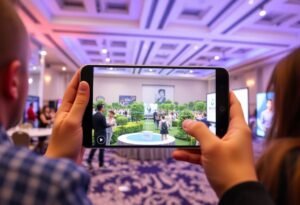Virtual Reality (VR) is transforming the landscape of education, providing innovative solutions that engage students in immersive learning experiences.
Innovative Uses of Virtual Reality in the Classroom
One of the most significant advancements in educational technology is the integration of Virtual Reality into the classroom. Educators are now using VR to create immersive experiences that allow students to explore complex subjects such as history, science, and art in a three-dimensional space. With VR, students can take virtual field trips to ancient civilizations, conduct interactive science lab experiments, or visit art museums from the comfort of their classrooms. This hands-on approach can enhance engagement and improve knowledge retention, making learning both fun and effective.
Benefits of Immersive Learning Experiences
The move towards immersive learning experiences through virtual reality in education offers numerous benefits. Research has shown that students who learn through VR are more likely to retain information compared to traditional teaching methods. This is because immersive environments stimulate emotional connections and promote active participation. Furthermore, VR caters to various learning styles, allowing visual, auditory, and kinesthetic learners to grasp concepts more effectively. As educational institutions embrace these technologies, the potential for tailored learning experiences expands, fostering a more inclusive educational environment.
Advancements in VR Technology
Recent advancements in VR technology have dramatically improved the quality of educational experiences. High-resolution displays, improved haptic feedback, and more responsive motion tracking have made virtual environments more realistic than ever. These enhancements allow for greater interactivity, such as manipulating virtual objects or simulating various real-world scenarios. As technology continues to evolve, the possibilities for using VR in education will expand, encouraging further exploration and innovation in teaching methods.
Collaboration and Social Learning Through VR
Another promising aspect of virtual reality educational tools is their ability to promote collaboration among students. Virtual classrooms allow learners to work together on projects, share ideas, and solve problems in a simulated environment. This can lead to enhanced social skills and teamwork, critical components of the 21st-century learning landscape. Furthermore, teachers can monitor student interactions, guide discussions, and provide real-time feedback, making learning experiences more dynamic and engaging.
Future Trends in Education with VR
Looking ahead, the future of education with virtual reality is promising. As more schools and universities adopt VR technology, we can expect to see an increase in hybrid learning models that combine traditional methods with immersive experiences. Moreover, VR platforms are likely to evolve toward becoming more accessible and affordable, allowing even smaller educational institutions to utilize these innovations. Additionally, the integration of artificial intelligence into VR learning experiences may personalize education further, adapting content and pacing to meet individual learners’ needs.
Potential Challenges and Considerations
While the benefits of VR in education are substantial, there are challenges to consider. Issues such as high costs of implementation, the need for teacher training, and potential technical problems may pose obstacles for some institutions. Furthermore, concerns over screen time and the impact of immersive experiences on mental health require careful consideration. As VR continues to grow in prominence in education, stakeholders must address these challenges proactively to create safe and effective learning environments.
Disclaimer: This article is for informational purposes only and does not represent professional advice.





















